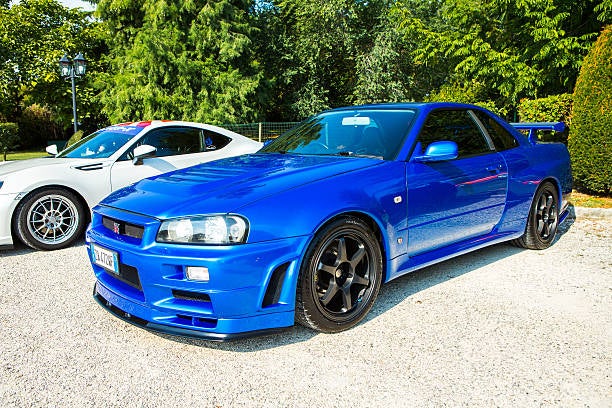That may sound silly to anyone that knows my track record of owning a massive number of European cars, but this is truly one that was imported, and not by the manufacturer.
This car was never available in the North American market. It was imported by a member of the Armed Forces and is allowed entry to the United States by the “25-year rule.”
The 25-year rule is a somewhat complicated regulation by the federal government on importation of motor vehicles.
As some countries make motor vehicles for only certain parts of the world, with differing safety, emissions, and styling configurations, the importation of some of the coolest cars in the world will never happen here.
The cars we don’t get here are referred to as “gray market cars.”
The 25-year rule states that “gray market” cars can only be imported to the United States after 25 years of time has lapsed from their production date. There are certain workarounds for very low production cars of 500 units or less; but even then, they cannot be driven more than 2,500 miles a year.
These “carve outs” are for private collectors and museums that transport cars to events.
The 25-year rule was implemented in 1988 under the Import Vehicle Safety Compliance Act and was touted as something to protect consumers from unsafe automobiles.
This rule has one true purpose, and that is to protect domestic automobile manufacturers.
In the 1980s, consumers could import cheaper models from overseas and register them like any other car and many did. This led to competition from unexpected sources at a time when the domestic automotive industry was struggling.
Federal standards on crash items like bumper performance, glass shattering, and even instrumentation units were the excuse to make sure all vehicles imported were from legitimate manufacturers that paid their taxes, labor unions, and politicians.
After 25 years have passed, these “antiques” are allowed in, with their supposed substandard features and dangerous emissions, but they are no threat to domestic automobile production anymore.
In 2024, certain vehicles are starting to gain a lot of value because of this rule.
The long wait is over for the R34 Nissan Skyline GT-R, the rally inspired Mitsubishi EVO, and even the econobox oddity Audi A2. Many of these are now packed into containers on a slow boat ride to American ports, to eventually be snapped up by enthusiasts.
These cars are normally priced well over what they should be worth due to scarcity and the cool factor of not having something everyone else has. It is a real flex at the local meets to stand out in good ways, and this is one of the best ways to do it.
The car I am buying is a 1992-year model and has been importable for some time now, but that doesn’t make it any less special.
I have seen exactly one of these in the United States, and in a few hours, it will be towed to my shop for refurbishment. I have had faster, more valuable, and arguably cooler cars, but none so rare.
In due time I will share with you all what it is!
As for me, I will see you on the road, in kilometers per hour!











